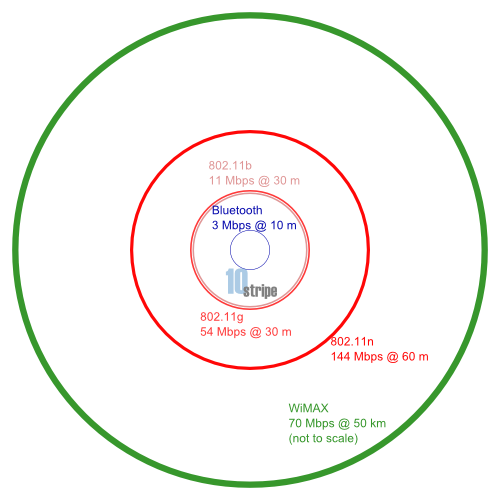Wireless technologies comparison
Wireless technology standards are springing up all over the place, with a broad variety of uses. This page is meant to provide a high-level comparison of some very different technologies, in the hopes that this will make clear just how different these standards really are. It is by no means a comparison of every wireless standard in existence, but covers some of the most common standards.
Most of these standards support a number of variants, with different range and throughput characteristics. For simplicity, we have opted to use data representative of the overall standard rather than enumerate every single variant. Additionally, it must be noted as always that all throughput numbers are theoretical maxima, and will (for a variety of reasons) never be reached in real use. Ranges are "typical" estimates, with similar caveats.
| Common name | Standard | Class | Throughput | Range |
|---|---|---|---|---|
| Bluetooth 2.0 EDR | IEEE 802.15 | Personal Area Network (PAN) | 3 Mbps | 10 m |
| Wi-Fi | IEEE 802.11b | Local Area Network (LAN) | 11 Mbps | 30 m |
| Wi-Fi, Wireless-G | IEEE 802.11g | LAN | 54 Mbps | 30 m |
| Wi-Fi, Wireless-N, Draft-N | IEEE 802.11n (draft) | LAN | 144 Mbps | 60 m |
| WiMAX | IEEE 802.16 | Metropolitan Area Network (MAN) | 70 Mbps | 50 km |
Data for 802.11n is still very approximate. Throughput will drop at grater distances. Some of this data comes from the Bluetooth SIG, which provides qualitative and quantitative comparisons between Bluetooth and other standards. Some comes from Intel.
A huge version (10,000 x 10,000 px, 1.68 MB) of this image is also available. Other sizes available on request.

